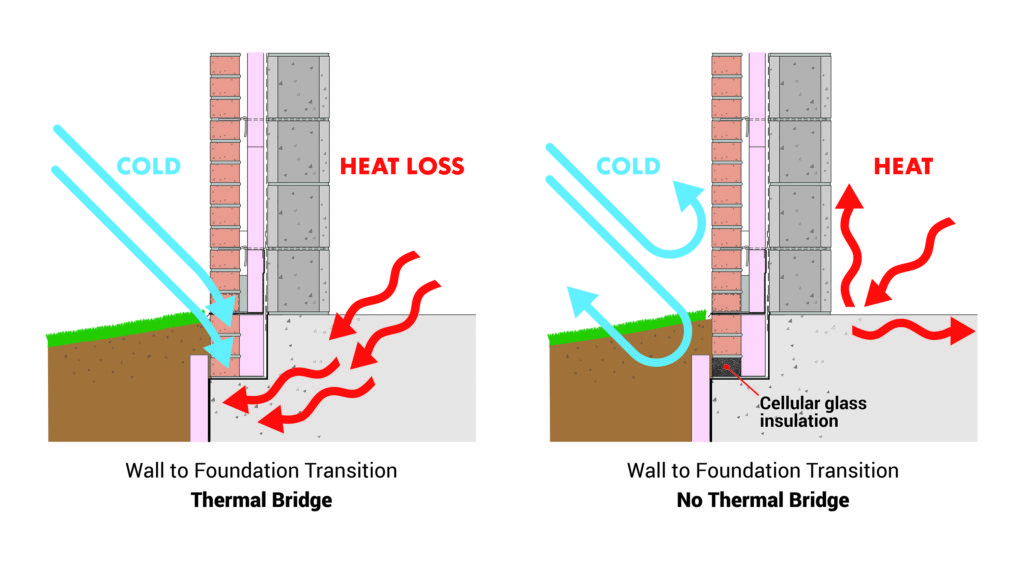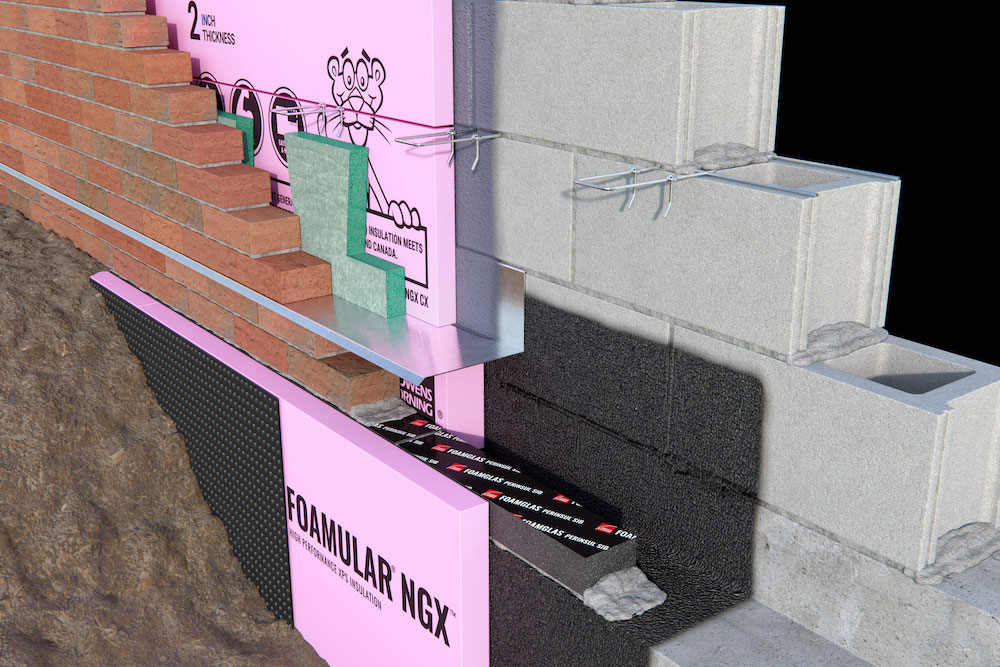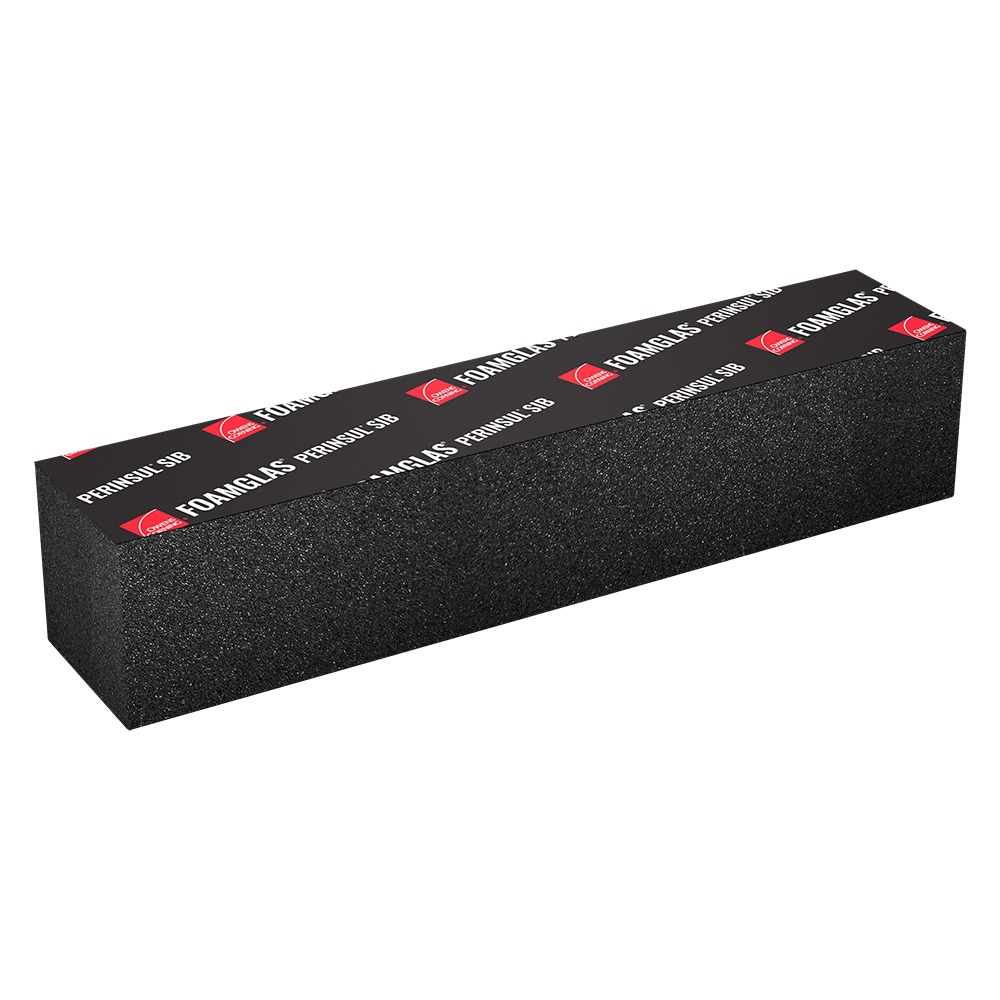Words: Tiffany Coppock, Commercial Building Specialist, Owens Corning
Photos: Owens Corning
Resilience and longevity are attributes that contribute to masonry’s performance in the enclosure. But as today’s building owners continue to seek more energy-efficient and comfortable structures, masons are charged with building to an even higher level of thermal performance.
Public and private initiatives that aim to improve the energy performance of buildings – such as net-zero energy schools and commercial offices—provide an incentive to address underperforming thermal areas in the building enclosure. Such weak spots can reduce occupant comfort and contribute to energy loss and higher operating costs.
“Thermal bridging” refers to any interruption in a building’s envelope and has been a longstanding challenge for AEC professionals. Any break—such as a structural element—that prevents continuity of insulation will act as a path for increased heat loss. This path is referred to as a thermal bridge and is a challenge in all types of structures—from single-family homes to vast industrial buildings. Respecting the physics of thermodynamics, energy flows from hot to cold and humid to dry. As humidity reaches cooler temperatures, condensation occurs creating the accumulation of moisture. Therefore, thermal bridges can result not only in energy loss/ increased energy usage but potential moisture risk.
Understanding The Performance Gap
A thermal bridge can occur at any change of direction, change in plane, or change in the material in the building design, particularly at the junctions between construction elements. Some common spaces for thermal bridging issues to arise include the intersection of external wall partitions and a steel beam, or where the ground floor meets the foundation. In some instances, thermal bridging occurs in a predictable pattern—for example at joist intervals—and these are referred to as repeating thermal bridges. Thermal loss in a single consistent direction along conductive components is referred to as a linear thermal bridge or linear anomaly per some thermal evaluation software tools.
While a single intersection of a conductive material into the insulated “clear field” may be labeled a point thermal bridge or point anomaly. Finally, all construction materials require attachment methods, and some may contribute smaller, individual thermal bridges throughout a surface, such as insulation fasteners in a wall that still should be accounted for—this is commonly a calculated “clear field,” which accounts for the insulation. But these thermal bridges can be impacted by attachment selection.
Thermographic imaging of a building is a helpful tool to visualize the locations where thermal bridges are present following construction. While thermography can identify areas of unintended lost heat, sophisticated models and analytic tools are used to analyze and quantify thermal bridging heat loss throughout various areas of the enclosure ideally prior to construction. Both the insights revealed from thermal imaging and data yielded by models reveal opportunities to improve the enclosure’s thermal performance and reduce thermal bridging.
Consideration of potential thermal bridging issues should begin during the design stage and be carried through during material specification and construction phases. Early attention to thermal bridging concerns can help mitigate the “performance gap”—the discrepancy between a building’s real-world energy use and its prescribed energy use. More than 76% of overall U.S. electricity and 40% of all U.S. energy is used by buildings—with the majority being heating and cooling.1 While the International Energy Conservation Code (IECC) strives to reduce this energy loss through prescriptive requirements, addressing these performance gaps is also one of the ways we reduce our impact on energy usage as well as help prevent damage to the building or poor indoor air quality.
Any adaptation in the geometry of the building’s enclosure will introduce a thermal bridging situation. As an example of the inherent challenges buildings pose to thermal performance, consider a very basic masonry cavity wall. When constructing a 90-degree corner, the building’s cavity wall insulation can be easily continued around the corner without interruption. But even with this straightforward application, there will still be thermal loss at the corner compared to the wall’s other surface area because the external surface area of the corner is greater than the internal surface area and additional structure is needed in corners to prevent movement leaving less room for continuous insulation.
Yet few buildings can function without corners. More complicated design situations exponentially increase the opportunity for thermal loss. While some amount of thermal bridging is inevitable (the alternative would be a structure wrapped entirely in insulation without windows or entries), the challenge can be managed through design strategies as well as thoughtful consideration of material selection and proper installation.
Thermal Bridging – Weak Links To Manage

In commercial and institutional enclosures, a common area of concern for thermal bridging is the junction detail between the foundation and the external wall. While we have identified that continuous insulation should be and is now a requirement to create an efficient thermal envelope, there are still a handful of locations where to date structural needs of supporting the exterior veneer wall or masonry are primary to the need of creating a single plane of thermal resistance. Where load-bearing does not occur, multiple insulations like polystyrene or mineral wool serve as good insulation as long as they are moisture-resistant (to resist any conductive moisture that enters behind the masonry veneer) and can be installed securely (often through compression fit between masonry ties, adhesive, or mechanical fasteners). However, this changes where the plane of insulation at the foundation needs to find continuity under masonry to the plane of insulation within the exterior cavity of the wall. Now this insulation would need to be not only water resistant and easy to install, but also resist high compressive loads with no deflection to prevent losing structural integrity.
Solving For Thermal Bridging In Masonry Construction: Cellular Glass Insulation
Structural integrity that supports occupant safety should always be the first priority for contractors, designers, and building owners. In certain locations of the enclosure—such as the aforementioned ground floor junction and the exterior assembly wall—the market has traditionally had to tolerate reduced thermal efficiency in order to ensure structural stability. Until recently, this design dilemma meant that masonry construction enclosures could not fully leverage the thermal benefits of continuous insulation.
Heat lost below exterior masonry veneer walls represented a “final frontier” for reducing thermal bridging. With this challenge in mind, Owens Corning brings a solution to reduce thermal bridging at critical junctions without requiring changes to the precise masonry processes for designing or constructing an enclosure. The solution for all these challenges? An insulating material trusted for half a century in high-performance buildings – cellular glass insulation.

Composed of cellular glass with a protective facing, FOAMGLAS® PERINSUL™ SIB (structural insulating brick) combines superior compressive strength with reliable thermal performance.
This intersection has traditionally broken the continuity of the ground floor construction, and in turn disrupted the continuity of the thermal insulation, creating a path for heat to escape or infiltrate. Years earlier when buildings were not required to have continuous insulation, a thermal bridge like this may not have been as significant to address.
However, as we begin to address energy consumption more wisely and continuous insulation becomes standard, thermal bridges like these will be the areas of opportunity for a final bit of energy efficiency in a quest for net-zero or net-positive energy buildings. By installing FOAMGLAS® PERINSUL™ SIB below masonry veneer walls, contractors can achieve a continuation of thermal integrity from one side of the wall to the other and curb heat loss.
While the compressive strength of FOAMGLAS® PERINSUL™ SIB for load-bearing purposes and thermal performance is central to performance in masonry applications, the material also brings other performance benefits to the enclosure. For example, cellular glass insulation is impervious to moisture in liquid and vapor form. Of course, appropriate water and vapor barriers should always be installed per manufacturers’ instructions, but this material can contribute to preventing rising dampness and serves as a material for supporting waterproofing through-wall flashings.
Designed To Leverage The Mason’s Craftsmanship
As masonry is a well-honed construction method trusted for millennia, masons may be skeptical of new building material. With this concern in mind, FOAMGLAS® PERINSUL™ SIB is designed and produced around standard masonry unit sizes and installation practices. The blocks can easily be integrated into brick and blockwork walls. The blocks are coursed to support direct continuity of the thermal envelope and tie to the structural wall.

In keeping with standard practices for brick or block construction, the FOAMGLAS® PERINSUL™ SIB blocks are laid on a mortar bed to ensure they are secure and level. The primary difference compared to conventional masonry is that the FOAMGLAS® PERINSUL™ SIB blocks are laid end-to-end, and tightly butted with no vertical mortar. The lack of any mortar between blocks prevents thermal bridging and the movement of moisture.
Installation of FOAMGLAS® PERINSUL™ SIB blocks follows practices used in other applications, contributing to a familiar feel on the jobsite.
Contributing To Net-Zero Goals
Including cellular glass insulation in construction projects can also contribute to emerging trends that aim to conserve energy resources. In both public and private sectors, efforts to conserve energy in buildings–such as net-zero construction–require novel approaches. Simply defined, a net-zero energy building produces all the energy it requires through a mix of generating onsite renewable energy, and other measures to reduce energy or support efficiency.
According to New Buildings Institute, there are approximately 700 net-zero energy buildings in the U.S. and Canada.2 Net-zero energy buildings reflect a growth of 42 percent between 2018 and 2020, and this growth is particularly robust in states with vigorous climate initiatives in place.2 Efforts to accelerate sustainability may accelerate the net-zero movement as America pursues a vigorous environmental agenda.
As masonry construction presents an approach for achieving buildings boasting beauty, resilience, and longevity, FOAMGLAS® PERINSUL™ SIB offers a path to tackle the final frontier in reducing thermal bridging and supporting a high-performing masonry enclosure. Learn more at https://www.owenscorning.com/en-us/insulation/foamglas.
References
1 Department of Energy. (2015, September). Quadrennial Technology Review 2015: An Assessment of Energy Technologies and Research Opportunities. https://www.energy.gov/sites/prod/files/2017/03/f34/qtr-2015-chapter5.pdf 2 Getting to Zero. (2018, January). Growth in Zero Energy Buildings Market Since 2012. New Buildings Institute. https://newbuildings.org/news/private-sector-investments-contribute-to-over-700-percent-growth-in-zero-energy-buildings/